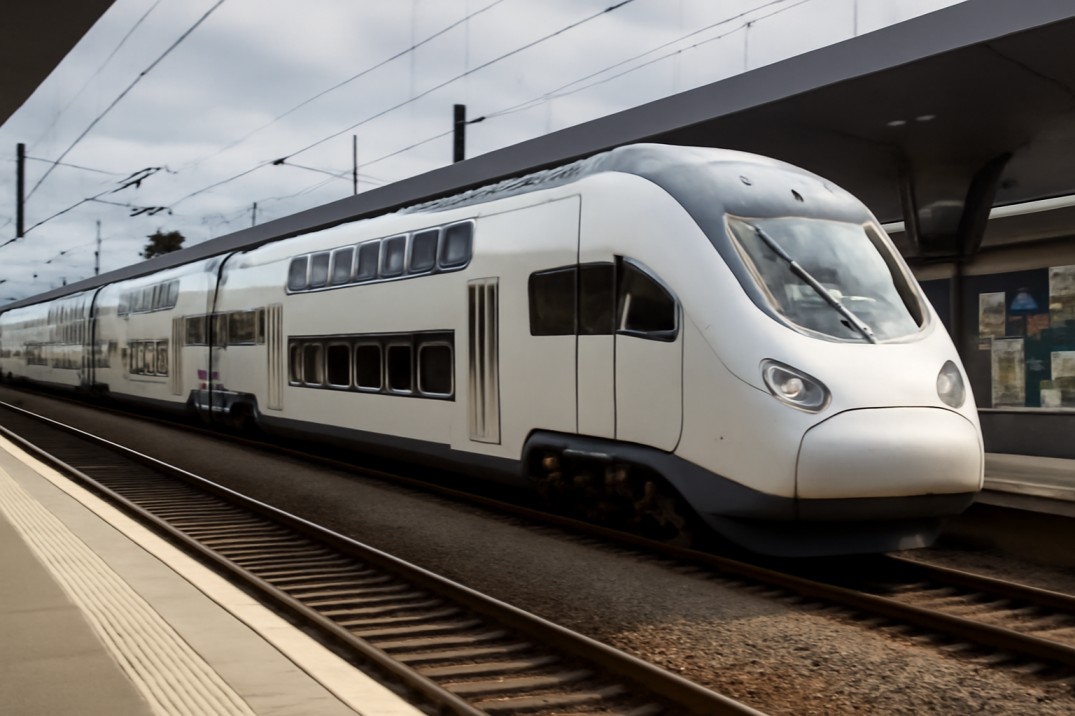Published on
November 4, 2025
The launch of new high-speed train routes by Westbahn will significantly enhance tourism in Austria. From March 2026, faster connections between Vienna, Graz, Klagenfurt, and Villach are set to revolutionise travel in the southern part of the country. This move promises not only to boost passenger convenience but also to enhance the tourism appeal of these scenic regions.
Westbahn, Austria’s leading independent rail operator, has unveiled an ambitious expansion plan. The new routes, powered by advanced high-speed trains, will offer tourists and locals alike an efficient, sustainable travel option, reducing travel times and offering more flexibility. The upgraded routes will better connect major tourist destinations, ensuring easier access to Austria’s stunning Alpine regions.
Connecting Vienna to the Heart of Austria
Westbahn‘s decision to expand its fleet and increase capacity will offer more frequent services on the Vienna-Graz-Klagenfurt-Villach corridor. This means tourists will have greater access to the cultural heart of Austria, with multiple departures every day, making it easier to explore Vienna’s vibrant city life, the historical richness of Graz, and the natural beauty of Carinthia.
Starting from March 2026, passengers will be able to travel from Vienna to Graz, Klagenfurt, and Villach in significantly less time. These regions, known for their natural attractions, are set to become even more accessible for visitors. With the introduction of faster trains, those looking to explore Austria’s countryside, including the stunning lakes and mountains in Carinthia, will find it easier than ever before.
A Greener, Faster, and More Comfortable Journey
Westbahn’s investment in new high-speed trains is an exciting development. These trains, capable of speeds up to 250 km/h, promise to reduce travel times while being energy-efficient, aligning with the growing demand for sustainable travel options. Featuring leather seating, power outlets, WiFi, and improved luggage storage, the new trains will provide a level of comfort that is likely to attract more tourists.
Passengers can enjoy a relaxed travel experience while accessing a region that’s becoming increasingly popular for both leisure and business tourism. The added benefit of two-level entrances and bicycle storage will make these trains more accommodating for those wishing to travel with ease and comfort.
This expansion comes at a time when travellers are increasingly seeking greener modes of transport, with rail travel offering a clear advantage over air or car travel. The new high-speed connections will not only be a hit with business travellers but also with tourists looking to explore Austria without contributing to congestion or environmental strain.
Implications for Regional Tourism Growth
The new connections will also help distribute tourists more evenly across Austria. Vienna has long been the focal point of Austrian tourism, but now, cities such as Graz and Klagenfurt, both rich in history and culture, will have easier access for tourists. This increased connectivity is expected to boost regional tourism, with visitors able to travel easily to these cities, which offer a range of attractions, from the stunning medieval architecture of Graz to the charming lakeside views of Carinthia.
A more efficient and accessible rail system will encourage more people to travel beyond the well-known hotspots of Vienna and Salzburg, leading to a more balanced spread of tourist traffic across the country. This, in turn, will support the local economies of these regions by increasing the number of tourists visiting local attractions, restaurants, and hotels.
Moreover, the ability to reach Bolzano and Venice via these extended high-speed routes will open up new avenues for cross-border tourism. Tourists who might have otherwise flown will now be able to enjoy a scenic and relaxing train journey through Europe. The extension to Italy could also boost Austrian tourism by attracting Italian visitors to discover Austria’s beauty.
A Controversial Decision with Strong Backing
While the expansion of the fleet and the high-speed routes is exciting for tourists, it has not been without its controversy. The use of Chinese-manufactured rolling stock has raised concerns within Austria, with the Austrian Chamber of Labour criticising the decision. Some have expressed concerns that this could pose a threat to local jobs and the European rail industry.
Despite this, Westbahn has assured the public that many of the train components are European, with the decision to source the trains from China being part of a cost-effective strategy. Furthermore, the project has undergone a four-year approval process and has received the necessary regulatory clearances for use in Austria, Germany, and Hungary.
While this controversy may continue, it’s important to focus on the long-term benefits the new trains will bring to passengers and tourists alike.
A Bright Future for Austrian Tourism
For business and leisure travellers planning to explore Austria, Westbahn’s high-speed rail expansion is a game-changer. By offering faster, greener, and more comfortable travel options, Westbahn will help make southern Austria more accessible, while also contributing to a more sustainable travel landscape in Europe.
As we look ahead to March 2026, the promise of these new rail connections between Vienna, Graz, Klagenfurt, and Villach represents a significant step forward for Austrian tourism. With the ability to access these regions more quickly and comfortably, tourists can look forward to a more enjoyable and seamless travel experience, one that highlights the best of Austria’s natural beauty and cultural heritage.
The future of Austrian tourism is bright, and it’s getting easier to explore the hidden gems of the south. As Westbahn continues its expansion, we can only expect even more exciting developments that will further enhance the country’s appeal to international visitors.
